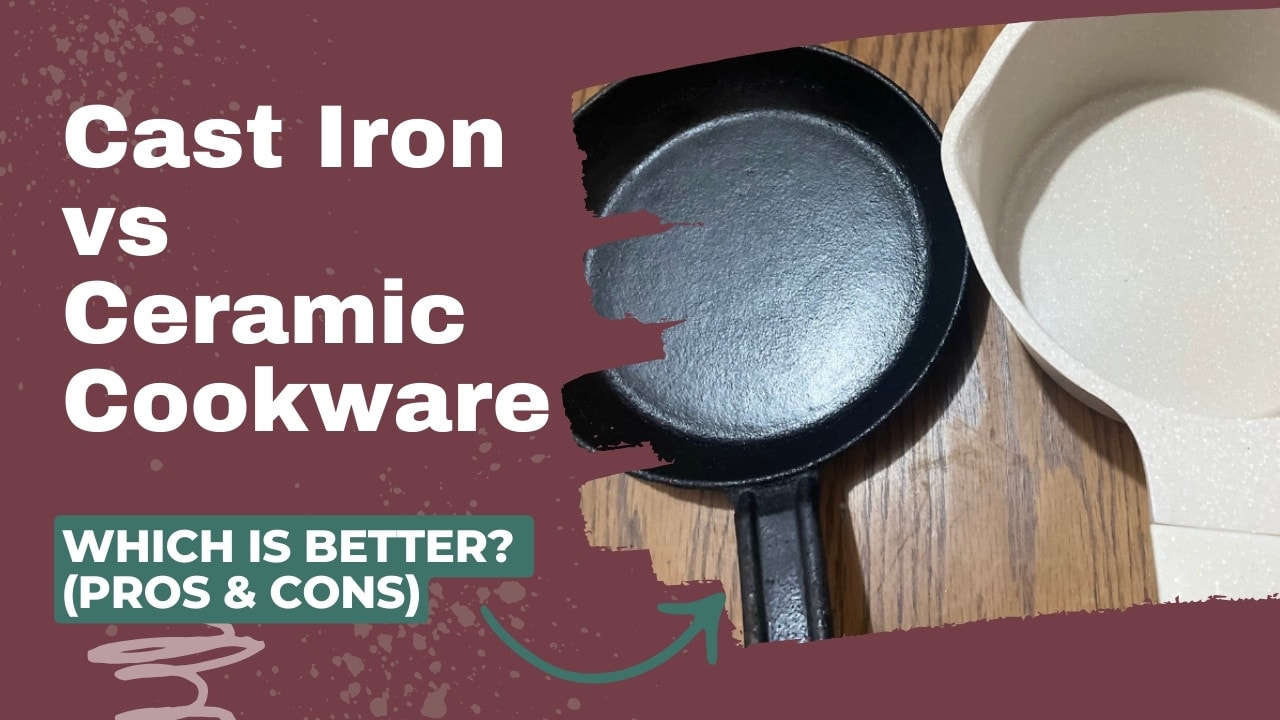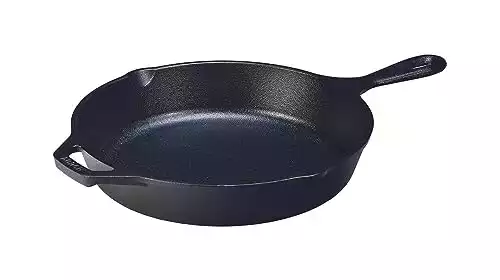Cast iron is one of the oldest cookware materials; ceramic nonstick is one of the newest. Yet both are rising in popularity thanks to their reputations as non-toxic options for pots and pans.
And what about pure ceramic cookware – made entirely of clay? Which one of these diverse cookware materials fits your lifestyle best? Let’s look at all their pros and cons!
Which is Better – Cast Iron Cookware or Ceramic?
Cast iron is generally more affordable, versatile, durable, and longer-lasting than ceramic cookware. Ceramic nonstick cookware is easier to clean and maintain and is much lighter in weight, but it has a short lifespan. Cast iron, pure ceramic, and ceramic nonstick cookware are best suited for different jobs; so a well-stocked kitchen has space for all of these materials.
What’s the Difference Between Them?
Cast iron and pure ceramic are both made from one solid material, but one is metal, while the other is clay.
Cast iron is an alloy made from 96-98% iron and 2-4% carbon with a bit of silicon or other elements. It is cast in one piece with no additional coatings applied, but some pans may come pre-seasoned with oil. Cast iron may be coated in porcelain enamel, creating iconic pieces like those from Le Creuset. In this article, though, we’ll be talking about natural cast iron without enamel.
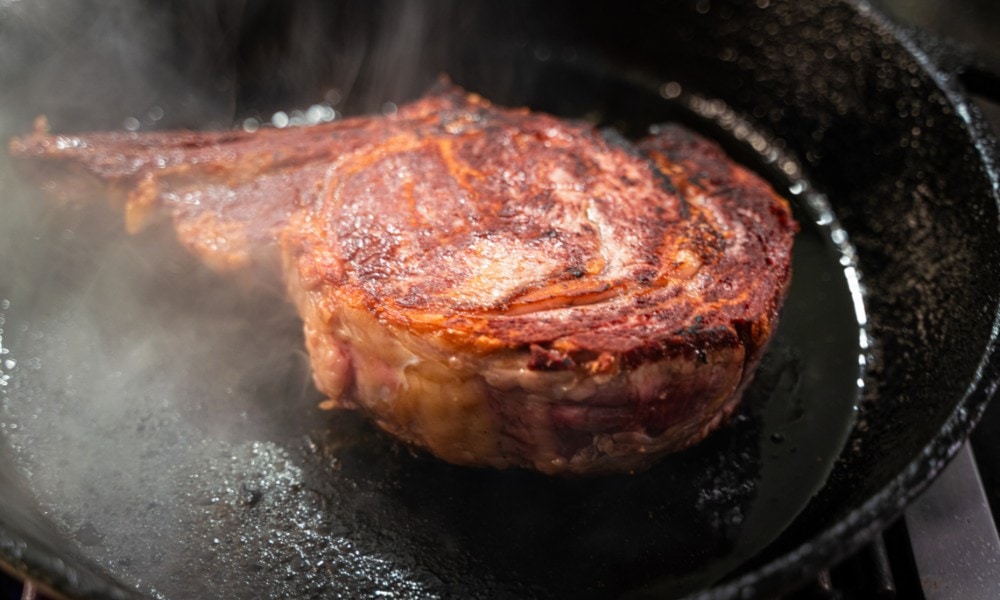
Pure ceramic is made from nonporous mineral clay that is fired and glazed with a watertight, glossy finish. It has no metal base or additional coatings.
Ceramic nonstick, on the other hand, has a metal base pan with a mineral-based nonstick coating applied. The base pan is usually aluminum, hard anodized aluminum, or stainless steel with a PTFE-free silicone dioxide-based nonstick coating. The handles are typically stainless steel or aluminum.
| Cast Iron | Ceramic Nonstick | Pure Ceramic |
|---|---|---|
| Great heat retention | Poor heat retention | Great heat retention |
| Oven safe to high temperatures | Typically not oven safe | Oven safe |
| Hand wash only | Hand wash only | Dishwasher safe |
| Semi-nonstick when seasoned | Nonstick | Semi-nonstick |
| Slow heating | Quick, even heat | Slow heating |
| Metal utensil safe | Not metal utensil-safe | Not metal utensil-safe |
| Heavy | Lightweight | Heavy |
| Heirloom quality | 1-3 year lifespan | 10-15 years+ |
| Best used for skillets and Dutch ovens | Best used as a frying pan | Best used for casserole dishes and Dutch ovens |
| Requires seasoning | Has a Teflon-free nonstick coating | Glazed |
| No synthetic chemicals | No PTFE, PFOA | No synthetic chemicals |
Uses and Versatility
Cast iron is a very versatile cookware that you can use for boiling, frying, and baking. But by far, my favorite way to use a cast iron pan is to sear a steak because it can achieve and maintain such a high heat.
You should avoid searing delicate proteins like fish on these pans, however, as they may stick a bit or fall apart. Sugary foods will bond with the seasoning on your pan and ruin it, so you should also avoid making confections on cast iron. Since iron is a ferritic metal, it’s suitable for all cooktops, including induction. You will need to use oil when cooking on cast iron.
Ceramic nonstick is very versatile, but it makes pan frying particularly easy. The nonstick surface means the food is quickly released, even with a tiny bit of oil. This is the pan I would recommend for frying delicate proteins like fish and eggs, as they won’t stick.
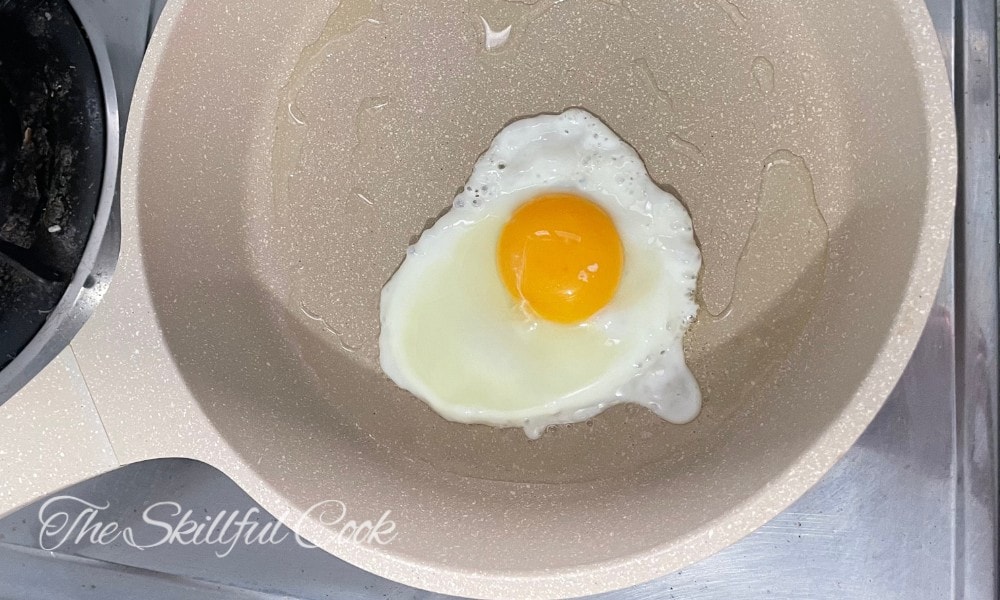
These pans are best used on low-medium heat to maintain the coating. Some ceramic nonstick is induction compatible, but this depends on the individual pan.
Pure ceramic is the least versatile because, in most cases, it is unsafe for the stovetop. The only exceptions I have found are the Xtrema Frying Pan and the Emile Henry Dutch Oven, and they can only be used on low. Ceramic is best suited for slow cooking and oven-baking.
Weight and Thickness
One of the significant downsides of cast iron is how thick and heavy it is. This thickness leads to excellent heat retention, but it makes the pans much more challenging to move around the cooktop.
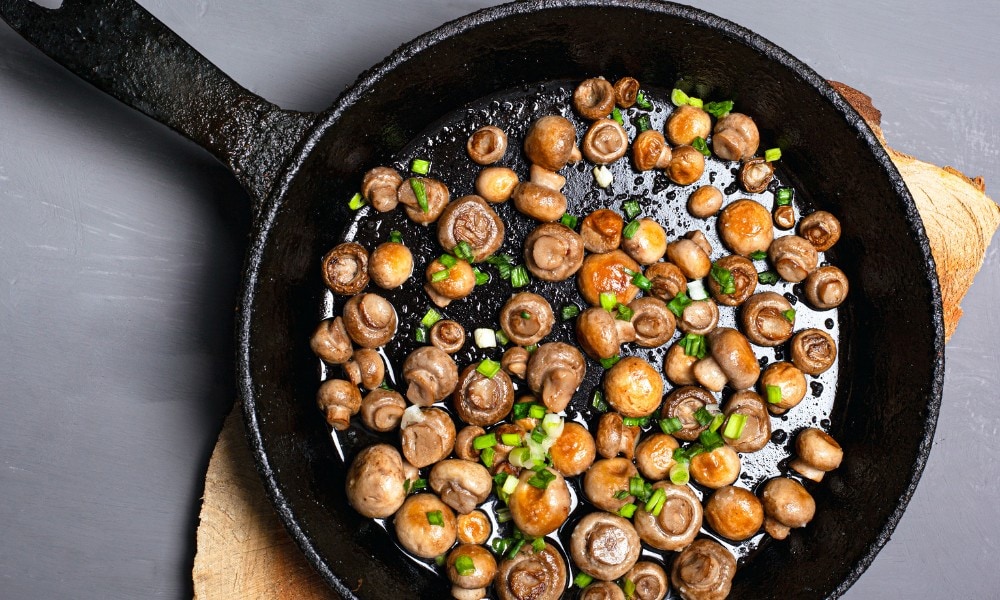
Pure ceramic is also on the heavy side. It’s important that the sides are thick, or they will be very easy to break, but this makes them heavier and harder to handle than ceramic nonstick.
Ceramic nonstick is by far the lightest option among these materials because ceramic-coated pans are often made from aluminum. They are also relatively thin. Regular (not hard-anodized) aluminum pans may dent easily if mishandled.
Styles
Another drawback to cast iron is its appearance. All the cookware has a textured black finish with a glossy seasoning patina. This is not unattractive by any means, but, in comparison to brightly colored ceramic pans, it’s a bit plain.
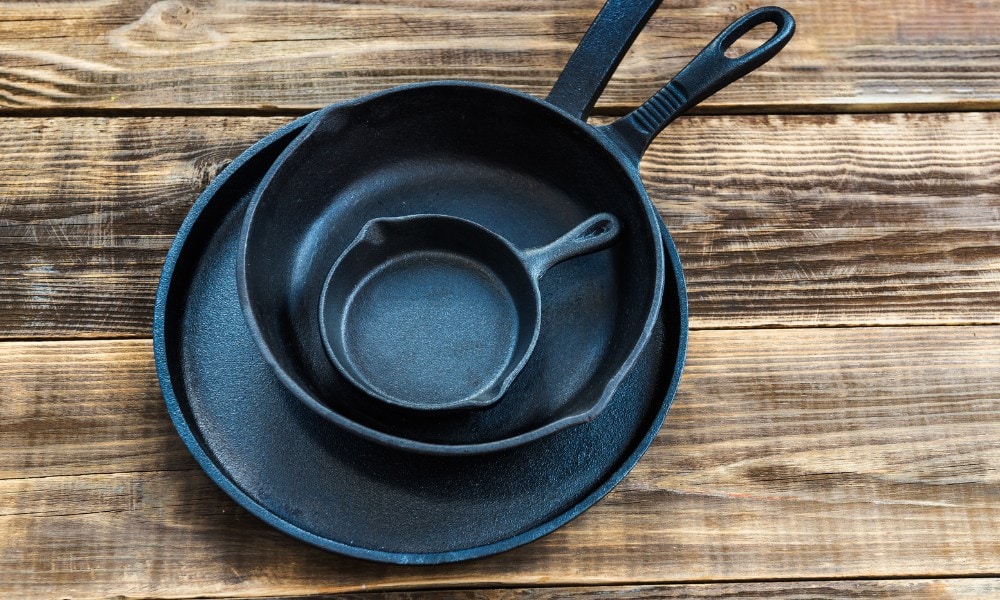
To get pretty colors in this material, you need to try an enamel cast iron option.
There are a lot of fun color options available for ceramic nonstick cookware. Some brands have regular silver or black pans, but others, like Caraway, have some stunning colorways. This cookware is perfect for displaying hung or on a shelf to add to your kitchen decor.
Pure ceramic is available in many beautiful colors as well as matte or glossy finishes. These pans are best stored on open shelving because they are so rustic and appealing.
Ease of Care and Maintenance
Cast iron requires the most maintenance of all these materials. It needs to be seasoned regularly with a high smoke point oil to create a semi-nonstick finish and prevent rust.
To maintain the seasoning, the cast iron needs to be cleaned carefully by hand using a gentle sponge and oil-based soap.
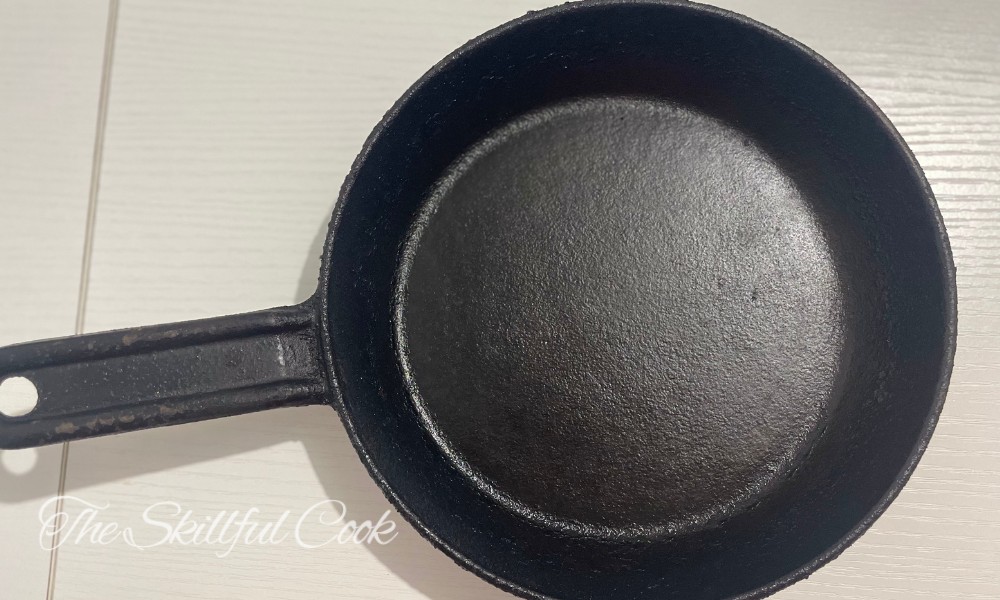
While ceramic nonstick requires no maintenance, it still needs to be cleaned by hand. The intensity of the dishwasher can degrade the nonstick coating rapidly. The ceramic coating is very easily damaged, so be sure to clean it with a soft sponge and never use steel wool.
Pure ceramic is the easiest of the bunch because it requires no maintenance, and you can simply pop it in the dishwasher. Xtrema says that its items are dishwasher-safe, but cautions against letting other items bump into your pure ceramic pan while in the dishwasher.
Longevity
Cast iron is by far the most long-lasting cookware of all three. Although it can be prone to thermal shock if heated too quickly, these pans are generally very durable and will last you a lifetime. Even rusted pans can be returned to their original state with a bit of love and care.
Next in line is the pure ceramic, which is also considered to be heirloom quality. But this material is much less durable; it can crack, chip, or completely break if it’s dropped or handled roughly. It is also prone to thermal shock, so it must be placed on a pot holder when it’s removed from the oven to prevent it from breaking. So, the lifespan of pure ceramic depends on how you treat it as a user.
Ceramic nonstick pans only have a lifespan of 1-3 years. The base pan and the nonstick coating heat up at a slightly different rate, eventually leading to tearing and a breakdown of the nonstick coating. Since nonstick ceramic coatings are made with a relatively new technology, we don’t fully know the risks of ceramic particles winding up in your food. So we recommend throwing your pan away if it becomes badly scratched.
Cost
Out of all these options, cast iron is the most affordable yet the most long-lasting. A cast iron skillet like this Lodge one is less than half the price of a high-quality ceramic nonstick alternative.
Ceramic nonstick is still relatively affordable, but you have to spend more to get a high-quality pan that is actually going to last.
Pure ceramic is by far the most expensive for a high-quality piece. There are cheaper options available, but they are far more prone to thermal shock and chipping.
✅ Preasoned
✅ Naturally stick-less
✅ Unparalleled heat retention
✅ PFOA & PTFE free
Cast Iron vs Ceramic – Pros and Cons
Cast Iron
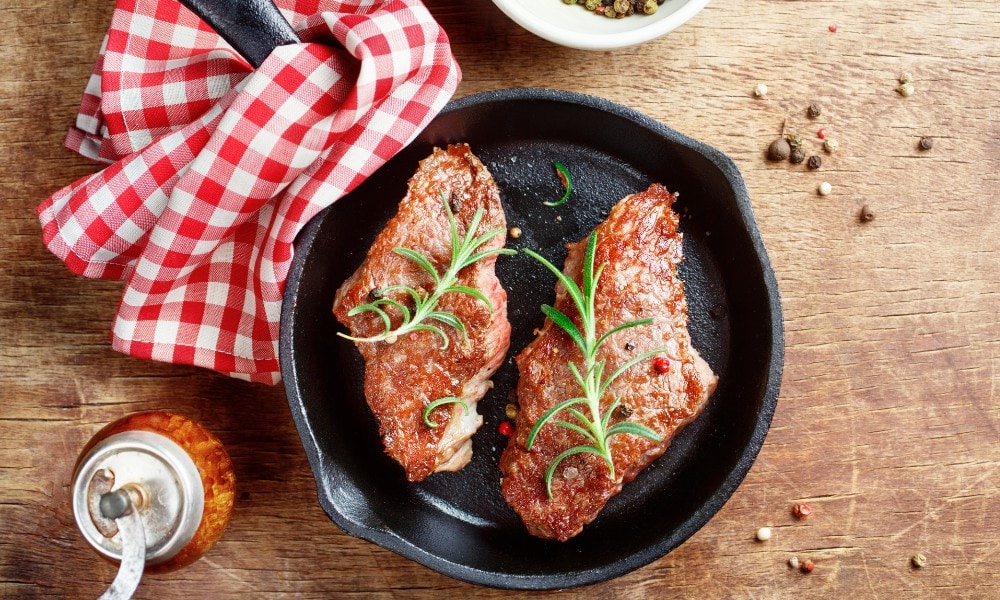
Pros
Cons
Ceramic Nonstick
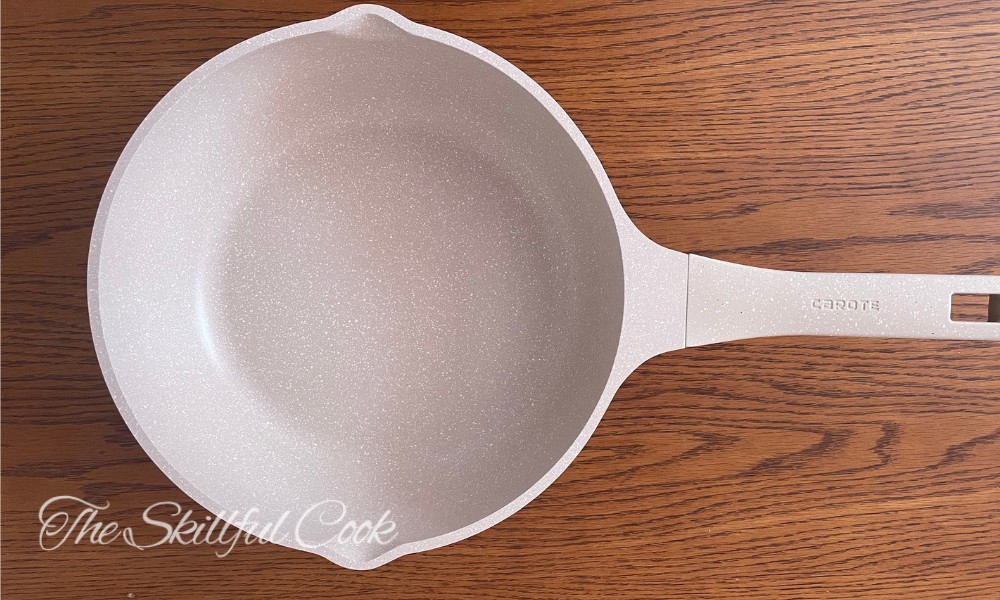
Pros
Cons
Pure Ceramic
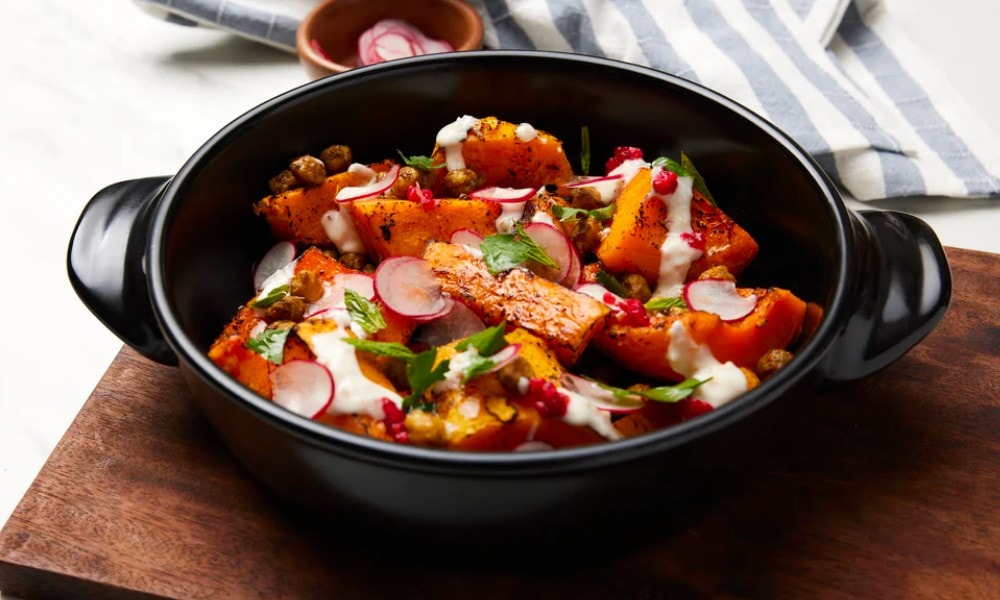
Pros
Cons
Are Cast Iron or Ceramic Pans Healthier to Cook With?
Cast iron, pure ceramic, and ceramic nonstick are all considered by experts to be “likely safe” to cook with, but we hesitate to call any cookware “healthy.” You can cook healthy food on a variety of cookware materials, and they all have their pros and cons.
Ceramic nonstick pans allow you to use the least oil of the three options we’re discussing here. The other two need roil, but they don’t have coatings that could flake into your food. Cast iron will transfer a small amount of nonheme iron to your food, which could be a positive or negative thing, depending on your personal health goals.
Consult your physician or other qualified healthcare provider before changing your dietary or cooking habits.
Conclusion
Overall, cast iron, ceramic nonstick, and pure ceramic are all useful cookware materials that have their own strengths and weaknesses. As a chef, I have a place for all of these different materials in my kitchen.
Got some burning questions about cast iron or ceramic cookware? Leave them below, and I’ll answer them best I can!

